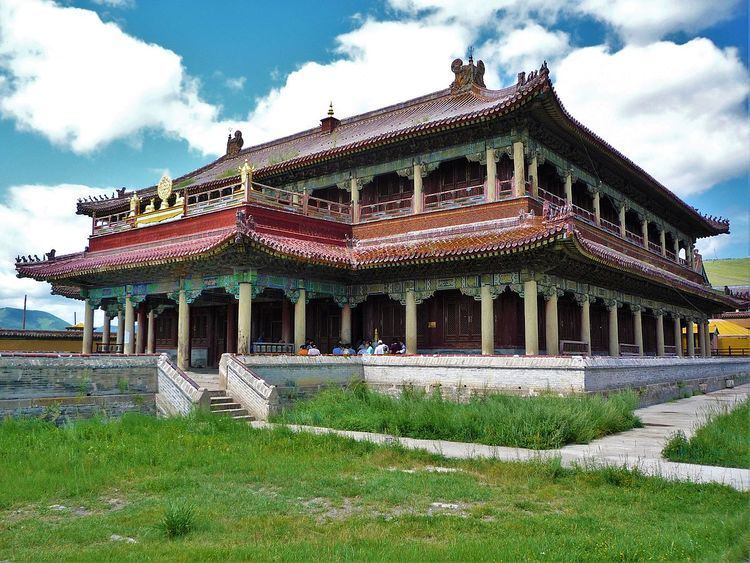Founded 1727 Type Tibetan Buddhist Phone +976 8811 8522 | Date renovated 1988 | |
 | ||
Architecture Chinese, Mongol and Tibetan influences Similar Erdene Zuu Monastery, Khorgo, Gandantegchinlen Monastery, Uran Togoo ‑ Tulga Uul, Flaming Cliffs | ||
Monkeetime mongolia outtakes 10 amarbayasgalant monastery
Amarbayasgalant Monastery (Mongolian: Амарбаясгалант хийд Amurbayasqulangtu keyid; Manchu: Urgun Elhe Sy, Chinese: 慶寧寺) or the "Monastery of Tranquil Felicity", is one of the three largest Buddhist monastic centers in Mongolia. The monastery complex is located in the Iven Valley near the Selenge River, at the foot of Mount Büren-Khaan in Baruunbüren sum (district) of Selenge Province in northern Mongolia. The nearest town is Erdenet which is about 60 km to the southwest.
Contents
The monastery was established and funded by order of Manchu Yongzheng Emperor (and completed under his successor the Qianlong Emperor) to serve as a final resting place for Zanabazar (1635–1723), the first Jebtsundamba Khutuktu, or spiritual head of Tibetan Buddhism for the Khalkha in Outer Mongolia and a spiritual mentor to both emperors' ancestor, the Kangxi Emperor. Tradition holds that while searching for an appropriate site to build the monastery, the exploratory group came across two young boys, Amur and Bayasqulangtu, playing on the steppe. They were inspired to build the monastery on that very spot and to name it after the two children, Amur-Bayasqulangtu. More likely, the location was chosen because it stood at the place where the lama’s traveling Da Khuree (his mobile monastery and prime residence) was encamped at the moment of the his death. Construction took place between 1727 and 1736 and Zanabazar's remains were transferred there in 1779.
Amarbayasgalant monastery is dedicated to Zanabazar’s main tutelary deity, Maitreya. Unlike Erdene Zuu Monastery, which is an ensemble of temple halls of different styles, Amarbayasgalant shows great stylistic unity. The overriding style is Chinese, with some Mongol and Tibetan influence. The monastery resembles Yongzheng’s own palace Yonghegong in Beijing (converted by his son the Qianlong Emperor into a Buddhist monastery). Originally consisting of over 40 temples, the monastery was laid out in a symmetrical pattern, with the main buildings succeeding one another along a North-South axis, while the secondary buildings are laid out on parallel sides.
Amarbayasgalant was one of the very few monasteries to have partly escaped destruction during the Stalinist purges of 1937, after which only the buildings of the central section remained. Many of the monks were executed by the country's Communist regime and the monastery's artifacts, including thangkas, statues, and manuscripts were looted, although some were hidden until more fortunate times.
Today, only 28 temples remain. Restoration work began in 1988 with funds provided by UNESCO and private sources and some of the new statuary was commissioned in New Delhi, India.
